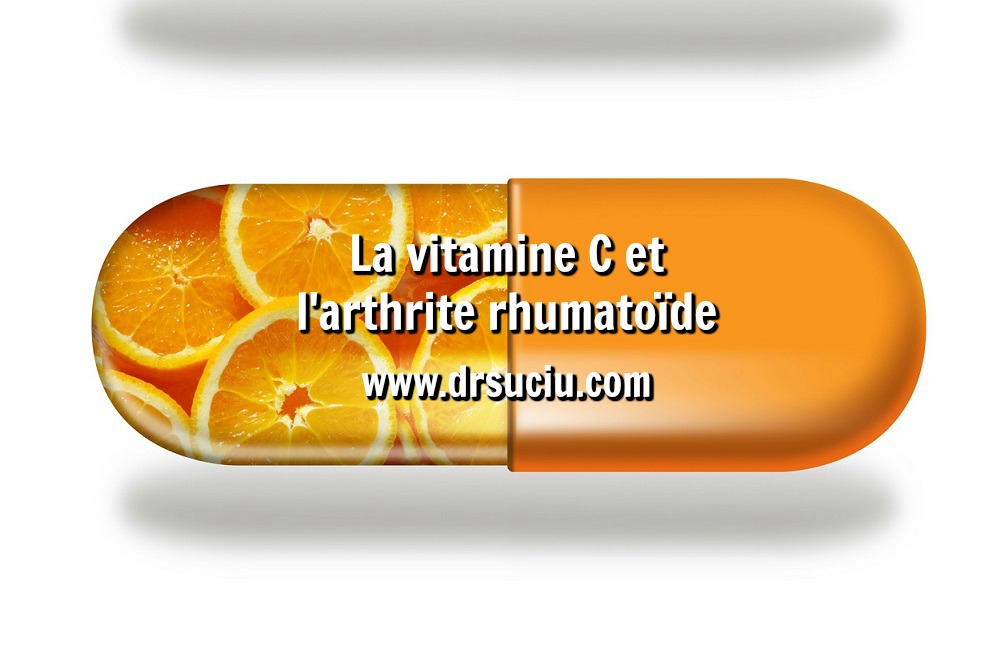|
L'ajout d'un antioxydant tel que l'acide ascorbique (la vitamine C), dans la gestion de l'arthrite rhumatoïde peut être d'une grande valeur. RÉFÉRENCE:
Veuillez lire l'article complet (en anglais seulement) : ABSTRACT Reactive oxygen species (ROS) and reactive nitrogen species (RNS) have distinct contribution to the destructive, proliferative synovitis of rheumatoid arthritis (RA) and play a prominent role in cell-signaling events. However, few studies had clarified the role of individual ROS and RNS in the etiopathogenesis of RA. To date, most of the studies were concerned with the measurement of the total oxidative and nitrative stress levels in RA. The aim of this study was to monitor the levels of individual ROS and RNS to emphasize the role that each plays in the pathogenesis of RA and their usefulness as possible biomarkers for the disease activity. In addition, the effect of an antioxidant (ascorbic acid), added to the treatment regimen, on the levels of ROS, RNS and disease activity has been evaluated. Forty-two Saudi RA patients and 40 healthy controls of both genders were included in this study. Serum levels of six different ROS and three different RNS were measured using specific fluorescent probes. The ROS included the hydroxyl radical ((•)OH), the superoxide anion (O2(•-)), hydrogen peroxide (H2O2), the singlet oxygen ((1)O2), the hypochlorite radical (OHCl(•)), and the peroxyl radical (ROO(•)). The RNS included nitric oxide (NO(•)), nitrogen dioxide (ONO-) and peroxynitrite (ONOO-). The main clinical and biochemical markers for disease activity were assessed and correlated with ROS and RNS levels. The clinical markers included the 28 swollen joint count (SJC-28), the 28-tender joint count (TJC-28), morning stiffness and symmetric arthritis, in addition to the disease activity score assessing 28 joints with erythrocyte sedimentation rate (DAS28-ESR). The biochemical markers included undercarboxylated osteocalcin (ucOC), matrix metalloproteinase (MMP-3), ESR, C-reactive protein (CRP), rheumatoid factor (RF) and anticyclic citrullinated polypeptide (Anti-CCP). Ascorbic acid (1mg/day) was added as an antioxidant to the regular treatment regimen of RA patients for two months, and the levels of ROS and RNS, as well as disease activity were re-evaluated. The results have shown significant higher serum levels of individual ROS and RNS in RA patients compared with healthy subjects. Moreover, this study might be the first to report strong positive correlations between most of the reactive species and the clinical and biochemical markers of RA. Interestingly, the addition of ascorbic acid had significantly reduced the levels of all ROS and RNS in RA patients. In conclusion, the role of oxidative and nitrative stress in the pathogenesis of RA has been confirmed by this study. Serum levels of ROS and RNS may effectively serve as biomarkers for monitoring disease progression. Finally, the addition of an antioxidant, such as ascorbic acid, in the management of RA may be of a great value. RÉFÉRENCE: Free Radic Biol Med. 2016 Aug;97:285-91. doi: 10.1016/j.freeradbiomed.2016.06.020. Epub 2016 Jun 21. Reactive oxygen and nitrogen species in patients with rheumatoid arthritis as potential biomarkers for disease activity and the role of antioxidants. Khojah HM1, Ahmed S2, Abdel-Rahman MS3, Hamza AB4. Les commentaires sont fermés.
|
AVIS IMPORTANT:
Veuillez prendre connaissance de cet avertissement et rappelez-vous que le site www.drsuciu.com ne saurait remplacer une consultation avec vos professionnels de la santé. L'information fournie sur le site web www.drsuciu.com est d'ordre général. Avant de prendre toute décision de nature médicale ou si vous avez des questions concernant votre état de santé personnel, adressez-vous à un professionnel de la santé qualifiée. D'aucune manière ces points de vue, commentaires et renseignements ne constituent une recommandation de traitement (préventif ou curatif), une ordonnance ou un diagnostic, ni ne doivent être considérés comme tels. Archives
Août 2017
|



 Flux RSS
Flux RSS